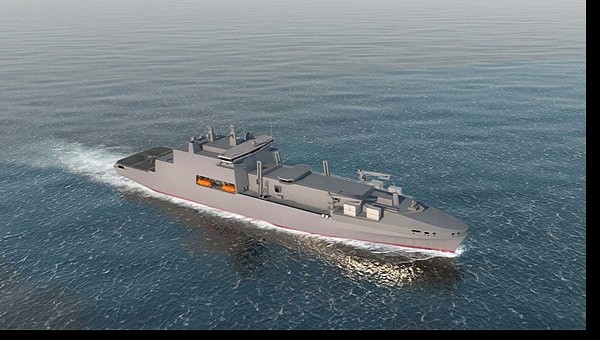Away from the spotlight, vessels such as Fort Victoria are the ones that ensure the success of the famous aircraft carriers and their task groups during extensive missions in remote locations. Therefore, it makes sense that the new-generation warships should be accompanied by equally-advanced support ships.
The Royal Navy confirmed the names of the builders that will be in charge of delivering 3 new support vessels. These are BMT, Harland & Wolff, and Navantia UK, all part of the Team Resolute consortium. A total of £1.6 billion ($1.9 billion) will be awarded for the construction of the 3 vessels.
They will become part of RFA (the Royal Fleet Auxiliary), replacing the 30-year-old RFA Fort Victoria, which has been playing this support role all by itself until now.
Here are some of the features of the future support vessels. They will be 216-meter-long (708.6 feet) and 34.5-meter-wide (113 feet), operated by a 101-member crew. Their flight decks are adapted to support all the helicopters operated by the British Army. Their hangars are big enough for 2 Royal Navy Merlins, plus several drones.
Each ship will boast a massive cargo space, big enough for up to 9,000 square meters (97 square feet) of supplies. In terms of speed, each of the 3 will be able to cruise at maximum 19 knots (21.8 mph/35 kph).
An important addition to the next-generation support fleet consists of energy-efficient technologies. The ambitious claim is that they’ll become carbon-neutral by the end of their 30-year service by gradually switching to non-fossil fuels and other alternative energy sources.
Pars of the future RFA ships will be built at Harland & Wolff’s shipyard in Belfast, as well as the Appledore in Devon and Navantia’s shipyard in Cadiz, Spain. Harland & Wolff will be in charge of completing the final assembly in Belfast.
They will become part of RFA (the Royal Fleet Auxiliary), replacing the 30-year-old RFA Fort Victoria, which has been playing this support role all by itself until now.
Here are some of the features of the future support vessels. They will be 216-meter-long (708.6 feet) and 34.5-meter-wide (113 feet), operated by a 101-member crew. Their flight decks are adapted to support all the helicopters operated by the British Army. Their hangars are big enough for 2 Royal Navy Merlins, plus several drones.
Each ship will boast a massive cargo space, big enough for up to 9,000 square meters (97 square feet) of supplies. In terms of speed, each of the 3 will be able to cruise at maximum 19 knots (21.8 mph/35 kph).
An important addition to the next-generation support fleet consists of energy-efficient technologies. The ambitious claim is that they’ll become carbon-neutral by the end of their 30-year service by gradually switching to non-fossil fuels and other alternative energy sources.
Pars of the future RFA ships will be built at Harland & Wolff’s shipyard in Belfast, as well as the Appledore in Devon and Navantia’s shipyard in Cadiz, Spain. Harland & Wolff will be in charge of completing the final assembly in Belfast.






